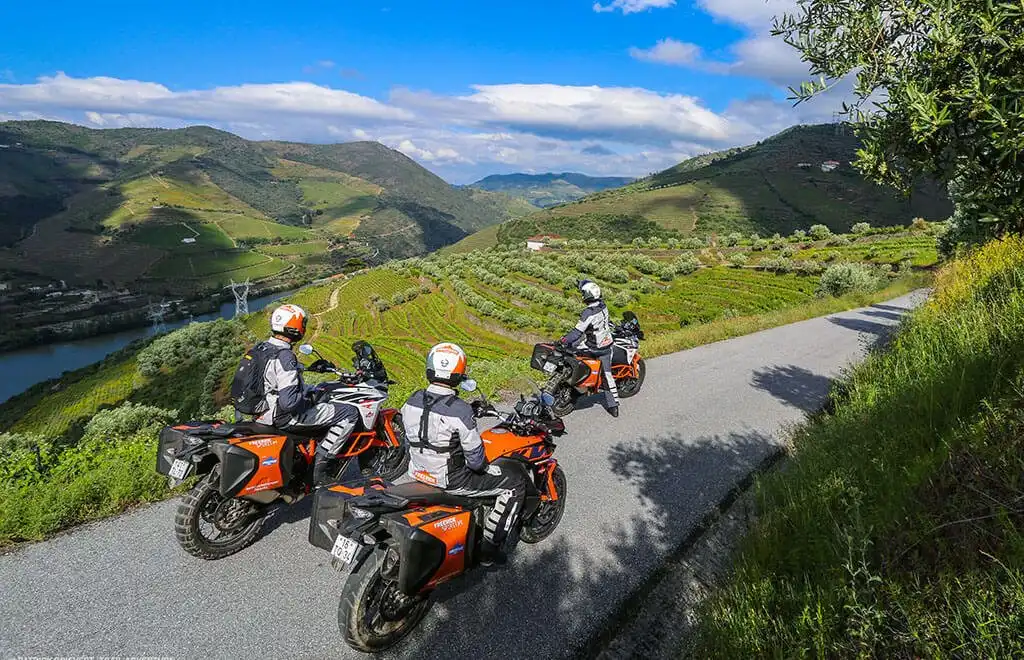Outline
H1: Introduction
- The thrill of two-wheeled travel
- Why proper planning matters
H2: Tip #1 – Choose the Right Bike for the Journey
- Touring vs. sports vs. dual-sport
- Comfort and luggage considerations
H2: Tip #2 – Gear Up with Safety and Comfort in Mind
- Helmets, jackets, gloves, and boots
- Weather-appropriate gear
H2: Tip #3 – Pack Smart and Light
- Essentials only: tools, clothes, documents
- Luggage types: saddlebags, tail bags, tank bags
H2: Tip #4 – Plan Your Route but Stay Flexible
- Mapping out scenic and safe routes
- Embracing detours and spontaneity
H2: Tip #5 – Prioritize Regular Maintenance
- Pre-ride inspection checklist
- Keeping a maintenance log
H2: Tip #6 – Stay Hydrated and Well-Fueled
- Water intake tips for riders
- Smart snacking on the road
H2: Tip #7 – Learn to Read the Weather
- Apps and tools for real-time updates
- How to dress and ride in changing conditions
H2: Tip #8 – Master the Art of Long-Distance Riding
- Mental and physical endurance
- Stretch breaks and rest stops
H2: Tip #9 – Stay Connected, Stay Safe
- GPS, intercoms, and emergency contacts
- Solo vs. group travel dynamics
H2: Tip #10 – Respect Local Laws and Cultures
- Helmet laws, speed limits, and local etiquette
- Engaging with local communities
H2: Bonus Tips for International Riders
- Crossing borders with a motorbike
- International permits and insurance
H2: Common Mistakes to Avoid on a Motorbike Road Trip
- Overpacking, underplanning, and skipping safety checks
H2: Must-Have Tools and Apps for Riders
- Navigation, weather, gas station locators, and rider forums
H2: Conclusion
- Recap of the journey preparation
- Encouragement for new riders
H2: FAQs
- How many miles should I ride per day on a motorbike trip?
- What’s the best way to avoid fatigue on long rides?
- How do I find biker-friendly accommodations?
- Is solo motorcycle travel safe?
- What documents do I need for international motorbike travel?
Introduction
There’s nothing quite like the feeling of hitting the open road on two wheels. The wind in your face, the engine’s hum beneath you, and the endless ribbon of highway ahead—motorbike travel is pure freedom. But while it’s thrilling, it’s not something you dive into blindly. Like any great adventure, the key to a successful motorcycle road trip is preparation. These top 10 expert motorbike travel tips will help you turn your ride into an unforgettable, smooth-sailing journey.
Tip #1 – Choose the Right Bike for the Journey
Not all bikes are made equal, especially when it comes to long-distance travel. If you’re heading out for hundreds or even thousands of miles, comfort should trump style.
Touring bikes like the Honda Goldwing or BMW R 1250 RT are built for distance with ergonomic seating, large fuel tanks, and built-in luggage. Dual-sport or adventure bikes (think BMW GS series or KTM Adventure) are perfect for rougher terrains. Even cruisers like the Harley-Davidson Road King offer great long-ride experiences.
Choose a bike that fits your height, comfort level, and the type of roads you’ll be tackling. A sore back or cramped knees can ruin your trip fast.
Tip #2 – Gear Up with Safety and Comfort in Mind
Let’s be real—jeans and a hoodie won’t cut it when you’re flying down the freeway at 70 mph. Invest in quality riding gear:
- A DOT- or ECE-approved helmet
- A well-fitted riding jacket with armor
- Protective gloves and riding boots
- Weatherproof layers for rain or heat
Comfort and safety go hand-in-hand. If you’re not protected, you’re distracted. And distraction leads to danger.
Tip #3 – Pack Smart and Light
When it comes to packing, less is definitely more. Think in terms of must-haves, not just nice-to-haves. Prioritize:
- Basic tools for minor repairs
- A first-aid kit
- Minimal clothes (quick-dry and layerable)
- Important documents (license, insurance, ID)
Choose between saddlebags, tank bags, or tail bags depending on your bike type. Overloading your motorcycle affects balance and handling—don’t make that mistake.
Tip #4 – Plan Your Route but Stay Flexible
It’s smart to map out your route ahead of time, especially to mark fuel stops, rest areas, and scenic detours. But don’t cling too tightly to your plan. Leave room for surprises, whether it’s a local food spot or an unexpected roadside attraction.
Apps like Rever, Kurviger, and Google Maps can help you chart both efficient and adventurous routes.
Tip #5 – Prioritize Regular Maintenance
Before you even start the engine, run through a full bike check. Here’s a quick pre-ride checklist:
- Tires: pressure and tread
- Oil: level and color
- Chain: tension and lubrication
- Lights and indicators
Carry a small toolkit, spare fuses, and a tire repair kit. Keep a maintenance log to track any servicing or repairs during the trip.
Tip #6 – Stay Hydrated and Well-Fueled
Long rides can leave you dehydrated faster than you think. Always carry a hydration pack or water bottle and snack regularly on protein bars or fruits. Skipping meals or drinking too little can lead to fatigue or headaches—two things you don’t want on the road.
Tip #7 – Learn to Read the Weather
Nature doesn’t care about your itinerary. Use weather apps like AccuWeather or Windy to track systems and avoid storms or extreme heat. A rainstorm without proper gear can soak you to the bone, while overheating can be just as dangerous.
Pack layers, and always carry rain gear, even if the forecast looks sunny.
Tip #8 – Master the Art of Long-Distance Riding
Endurance riding is more mental than physical. Break long journeys into smaller chunks—stop every 100 miles or two hours to stretch, hydrate, and check your bike.
Listen to your body. Fatigue leads to slow reactions and mistakes. Don’t push beyond your limits just to stay “on schedule.”
Tip #9 – Stay Connected, Stay Safe
Whether you’re solo or in a group, staying connected can be a lifesaver. Equip your helmet with a Bluetooth intercom, carry a charged phone, and use emergency contact apps like ICE or bSafe.
Let someone know your route and check in daily. In remote areas, consider a satellite tracker or offline maps.
Tip #10 – Respect Local Laws and Cultures
Every region has its own road rules—some countries require high-vis vests, while others enforce strict helmet laws. Learn the local norms and respect them. That includes:

- Speed limits
- Road signs
- Local riding customs
Being a respectful traveler earns you smiles, not tickets.
Bonus Tips for International Riders
Taking your motorbike across borders? Here’s what you need:
- An International Driving Permit (IDP)
- Cross-border motorcycle insurance
- Bike import/export papers
Research each country’s requirements well in advance. Some places require temporary vehicle permits or additional vaccinations.
Common Mistakes to Avoid on a Motorbike Road Trip
- Overpacking and losing balance
- Skipping safety checks
- Underestimating terrain or weather
- Ignoring fatigue signals
- Not informing someone of your route
Avoid these, and your ride will be smoother than your exhaust note.
Must-Have Tools and Apps for Riders
- Rever: For mapping scenic rides
- Waze: Real-time traffic alerts
- EatSleepRIDE: Connects riders globally
- GasBuddy: Find cheapest fuel
- RainViewer: Real-time radar and forecasts
Load up your phone with these before rolling out.
Conclusion
There’s something raw and beautiful about exploring the world on a motorbike. The freedom, the challenge, the stories waiting around every bend. With these expert motorbike travel tips, you’ll not only ride safer—you’ll ride smarter. Pack right, plan smart, and always keep a spirit of adventure in your saddlebag.
So fire up your engine, hit that throttle, and make your next road trip your best one yet. The open road is calling—will you answer?


